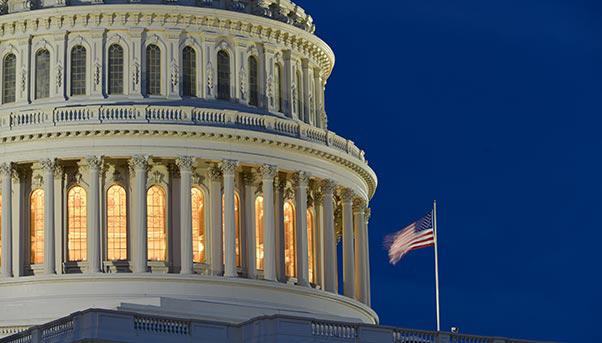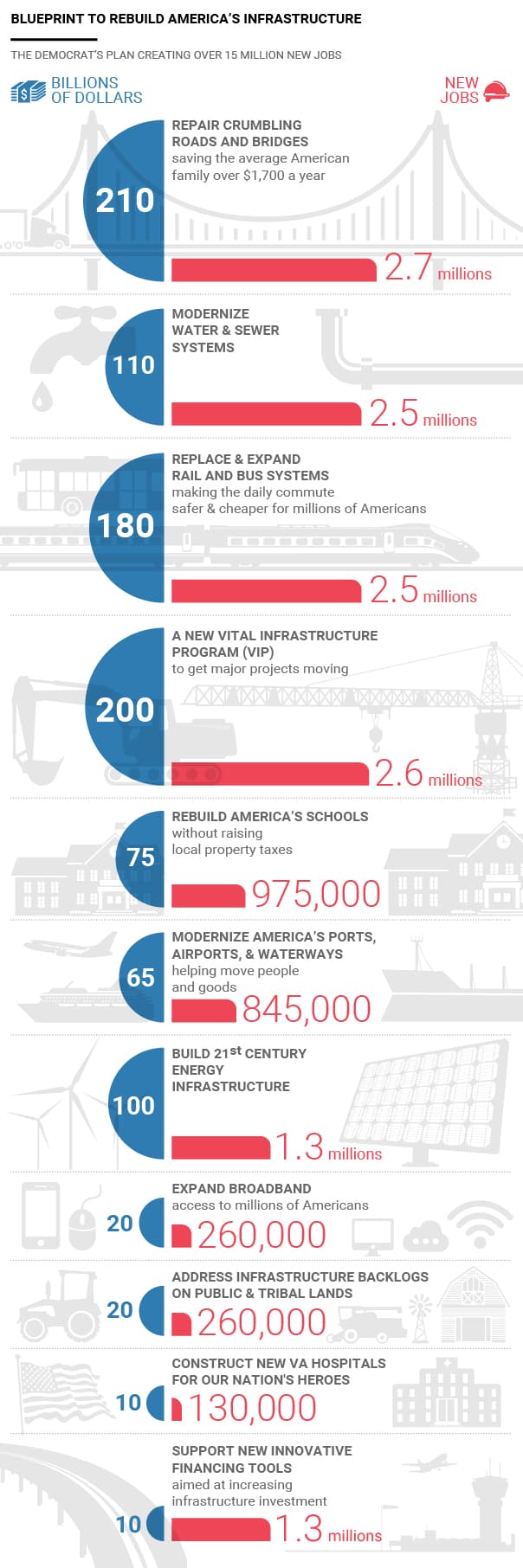
Despite the political sparring that it wages with Republican President Donald Trump, there is at least one topic on which the Democratic Party agrees with its opponent: the importance of investing in infrastructure to create jobs and strengthen the U.S. economy.
It is a rare occurrence but the country’s two main political parties find themselves in agreement on the need to invest heavily in the sector to keep the economy growing. As 80 expert advisers to Trump worked out the details of his campaign proposal to invest $1 trillion in the sector, a group of Democrat senators recently responded in kind with a plan of their own entitled “Blueprint to Rebuild America’s Infrastructure and Create 15 Million Jobs”. Presented it at the end of January, the plan proposes to invest as much as Trump – $1 trillion – to modernize airports, bridges, roads and ports across the country, estimating that it would help create 15 million jobs in 10 years.
The Plan of Democrat Senators
The plan identifies key sectors where the majority of the funds would be destined. They include roads and bridges ($210 billion), railways and buses ($180 billion), water and sewage ($110 billion) and energy ($100 billion).
But the plan differs from the one championed by Trump in two ways. The first is the decision by the Democrat senators to include schools, hospitals and broadband services as recipients of investment. «Our nation’s infrastructure issues are vast, and they go well beyond just road and bridge repair,» Senate Minority Leader Charles E. Schumer said in a statement when the plan was presented. «Each day, too many students attend school in buildings so decrepit the pipes leach lead into their drinking water, our country’s heroes sit in VA hospitals that are crumbling beneath them, and millions in rural communities cannot kick-start local business because they lack access to the critical high-speed Internet they need.»
Second, the plan envisions the funds coming from the federal government. Trump’s plan, meanwhile, would seek support from private investors in the form of public-private partnerships (PPP) and a new infrastructure bank that would foster cheap loans or loan guarantees for projects. It could also raise funds by issuing bonds to ordinary citizens.

The Trump Plan
The rebuilding of the country’s decrepit infrastructure has been a war horse for Trump since the early days of his election campaign. It loomed large on Dec. 4, 2016, when the then president-elect said: «We are going to fix our inner cities. And rebuild our highways, bridges, tunnels, airports, schools, hospitals. We are going to rebuild our infrastructure which will become, by the way, second to none and we will put millions of people to work as we rebuild it».
Since that day, a team of experts have been working on the plan, which draws from a report entitled “Trump Versus Clinton On Infrastructure” published on Oct. 27, 2016, by private equity investor Wilbur Ross and Peter Navarro, a business professor at UC-Irvine, both of whom were senior policy advisers during the campaign. First off are the $1 trillion and the creation of an infrastructure bank to support the massive investment. The bank would start with an injection of federal funds before turning to private investors to help support investments in infrastructure projects.
The Effect of Convergence
The issue of investing in infrastructure was also addressed at a meeting held at the State Dining Room of the White House at the end of January between Trump and Democrat representatives and senators including Senator Schumer.
Aside from how and where to invest, Democrats and Republicans agree on the strategic role that investing in infrastructure can play in supporting the U.S. economy. It is a view that is also supported by an estimate made by the Federal Highway Administration, which sees every $1 billion invested in infrastructure creating at least 13,000 jobs a year. It is a rare but decisive agreement between the two parties that will play an important role in the future of the economy.

